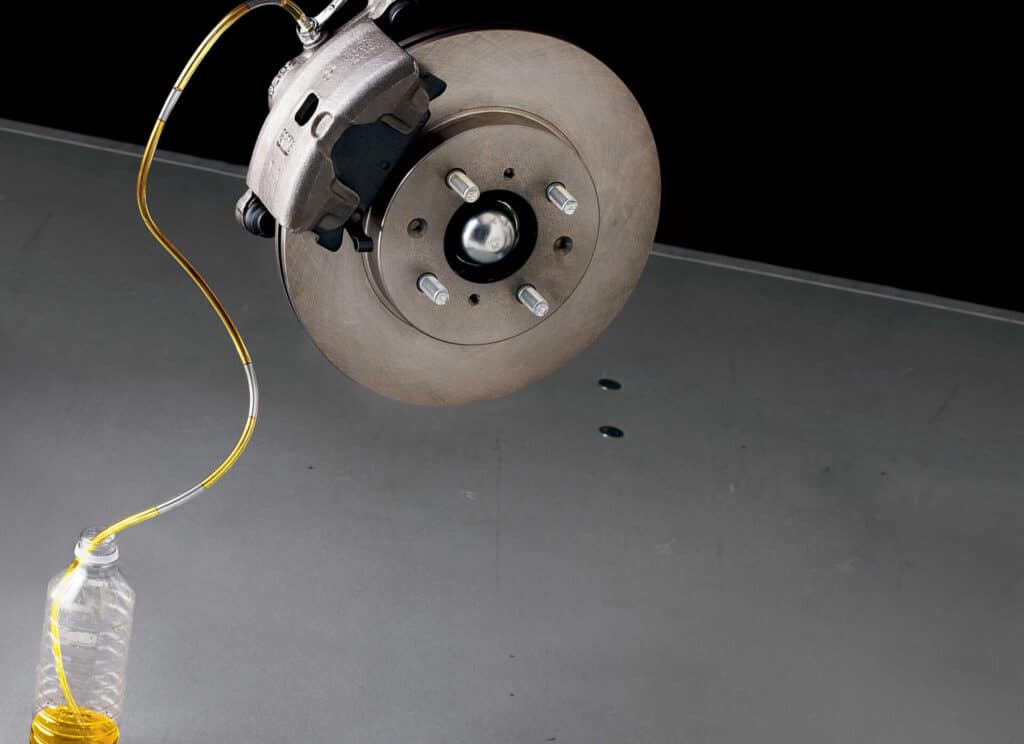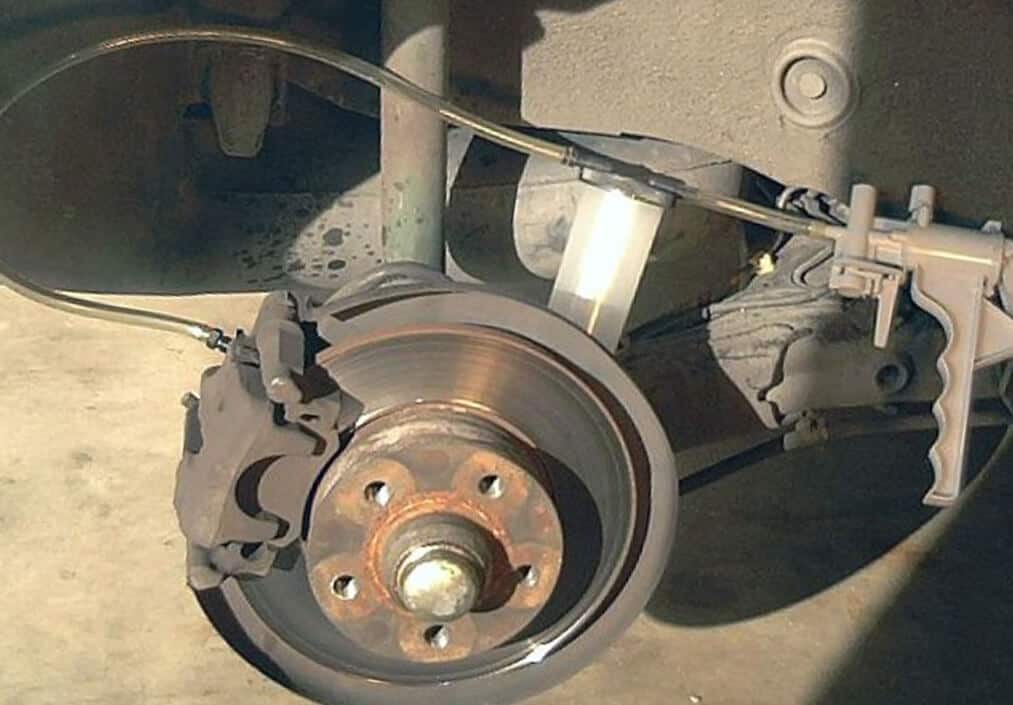Uncovering the Importance of Brake Bleeding
The braking system is a critical component of any vehicle, responsible for ensuring safety on the road. One essential maintenance task that often goes unnoticed is brake bleeding. This process helps maintain optimal braking performance by removing air bubbles and contaminants from the brake fluid, ensuring your car stops when it needs to.
Brake Fluid and Its Crucial Role in Your Braking System
Brake fluid plays a vital role in the proper functioning of your car’s brakes. It is a hydraulic fluid that transfers force from the brake pedal to the brake calipers or wheel cylinders when you apply the brakes. Brake fluid must be incompressible and maintain its viscosity over a wide temperature range to ensure consistent braking performance.

What is Brake Bleeding? A Comprehensive Overview
Brake bleeding is the process of removing trapped air and contaminants from the brake fluid in your car’s braking system. Air bubbles can be introduced into the system during repairs or fluid replacement, while contaminants can accumulate over time as brake fluid absorbs moisture and wears down. By bleeding the brakes, you can ensure that the hydraulic pressure is maintained and that your brakes function as they should.
Reasons to Bleed Your Brakes: Maintaining Optimal Performance
There are several reasons to bleed your car’s brakes, all of which contribute to maintaining optimal braking performance:
• Removing Air Bubbles: Air bubbles in the brake fluid can compress under pressure, causing a spongy or soft brake pedal and reducing braking efficiency. Bleeding the brakes eliminates these air bubbles and restores a firm, responsive brake pedal.
• Replacing Contaminated Brake Fluid: Over time, brake fluid can become contaminated with dirt, moisture, and other debris. Contaminated fluid can compromise the performance of your braking system and lead to corrosion of brake components. Bleeding the brakes flushes out contaminated fluid and replaces it with fresh, clean fluid.
• Flushing Out Old Fluid During Brake Component Replacement: When replacing brake components such as calipers, wheel cylinders, or master cylinders, it’s essential to bleed the brakes to flush out any old, contaminated fluid and ensure that the new components are filled with clean brake fluid.
Signs That Your Brakes Need Bleeding
Several symptoms may indicate that your brakes need bleeding:
• Spongy or Soft Brake Pedal: If your brake pedal feels spongy or soft when you apply pressure, it may be due to air bubbles in the brake fluid. Bleeding the brakes can eliminate this issue and restore a firm, responsive pedal.
• Inconsistent Brake Performance: If your brakes seem to perform inconsistently or feel “grabby” at times, it could be a sign that your brake fluid is contaminated and needs to be bled.
• Poor Braking Efficiency: If you notice a decrease in your vehicle’s braking efficiency, such as longer stopping distances or reduced stopping power, bleeding the brakes may help restore proper performance.
A Step-by-Step Guide to Brake Bleeding
Bleeding your brakes is a relatively straightforward process, but it’s essential to follow the proper steps:
• Gathering Tools and Supplies: Before you begin, gather the necessary tools and supplies, including a wrench, a clear hose, a drain pan, a brake bleeder wrench or key, and fresh brake fluid.
• Bleeding Sequence and Procedure: Start by locating the brake bleeders on each wheel, beginning with the wheel farthest from the master cylinder. Attach the clear hose to the bleeder valve, with the other end submerged in a container of fresh brake fluid. Have a helper pump the brake pedal several times, then hold it down while you open the bleeder valve. Close the valve before the brake pedal reaches the floor, and then release the pedal. Repeat this process until no air bubbles are visible in the fluid coming out of the hose. Make sure to top off the master cylinder with fresh brake fluid throughout the procedure to avoid introducing air into the system. Follow the same steps for each wheel, working your way closer to the master cylinder.
• Final Inspection and Test Drive: After bleeding all the brakes, check the brake fluid level in the master cylinder and top it off if necessary. Reinstall the wheels, lower the vehicle, and pump the brake pedal a few times to ensure a firm feel. Finally, take your car for a test drive to confirm that the brakes are functioning correctly and that the pedal feels firm and responsive.
Brake Bleeding Methods: Manual, Vacuum, and Pressure Bleeding
There are several methods for bleeding brakes, including manual, vacuum, and pressure bleeding. Manual bleeding is the most common method and is described in the step-by-step guide above. Vacuum bleeding uses a hand-operated vacuum pump to draw fluid through the brake system, while pressure bleeding involves using a pressurized container to force fluid through the system. Both vacuum and pressure bleeding methods can be more efficient than manual bleeding but may require specialized equipment.
When to Seek Professional Help for Brake Bleeding
If you are not confident in your ability to bleed your brakes or if you encounter any issues during the process, it’s best to seek professional help. A qualified mechanic can bleed your brakes and inspect your braking system for any underlying issues that may be causing problems.

The Importance of Regular Brake System Maintenance
Regular brake system maintenance is crucial to ensuring the safety and performance of your vehicle. In addition to bleeding your brakes as needed, be sure to inspect your brake pads, rotors, and other components regularly for signs of wear or damage. Replace worn or damaged parts promptly, and keep your brake fluid clean and topped off to maintain optimal hydraulic pressure.
Conclusion: Keep Your Brakes in Top Condition by Understanding Brake Bleeding
Brake bleeding is an essential maintenance task that can help maintain the performance and safety of your car’s braking system. By understanding the process and its importance, you can ensure that your vehicle stops when it needs to and that your brakes remain in top condition for years to come. Remember to perform regular brake system maintenance and seek professional help if you’re unsure about any aspect of brake bleeding or brake system care.
